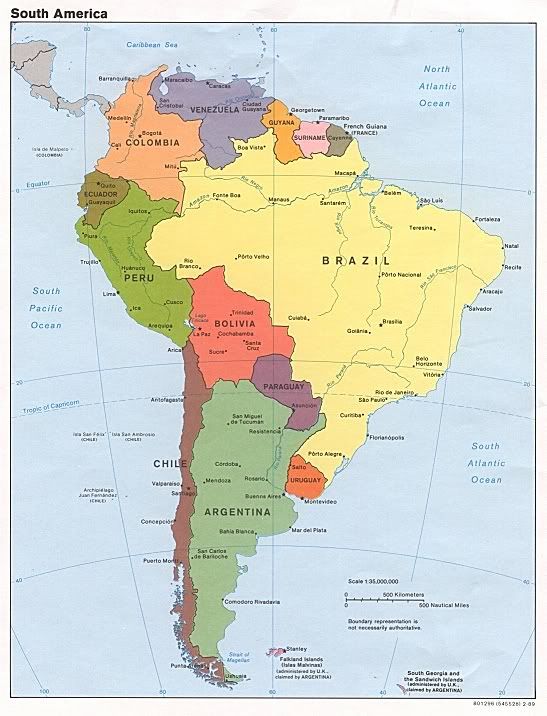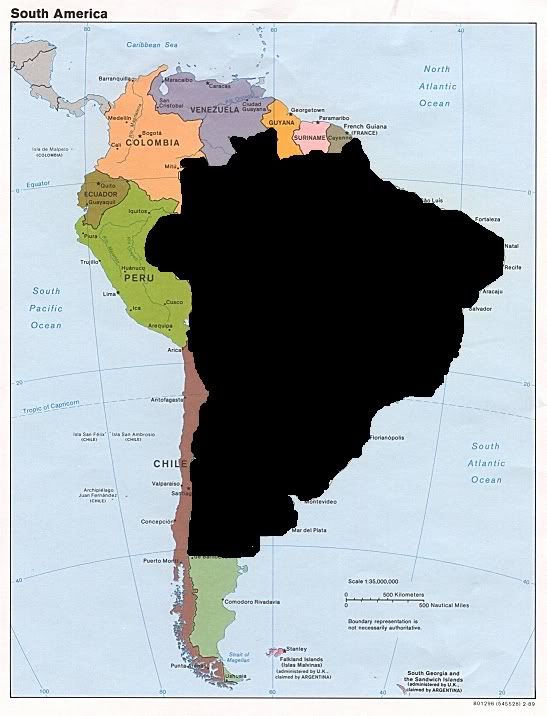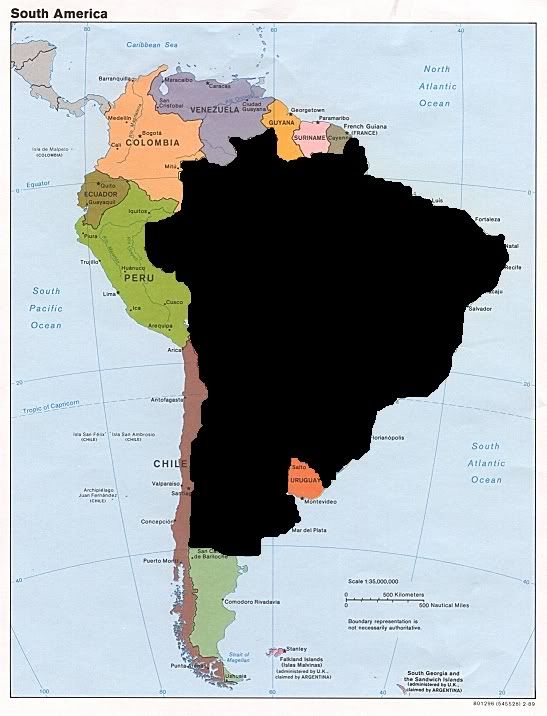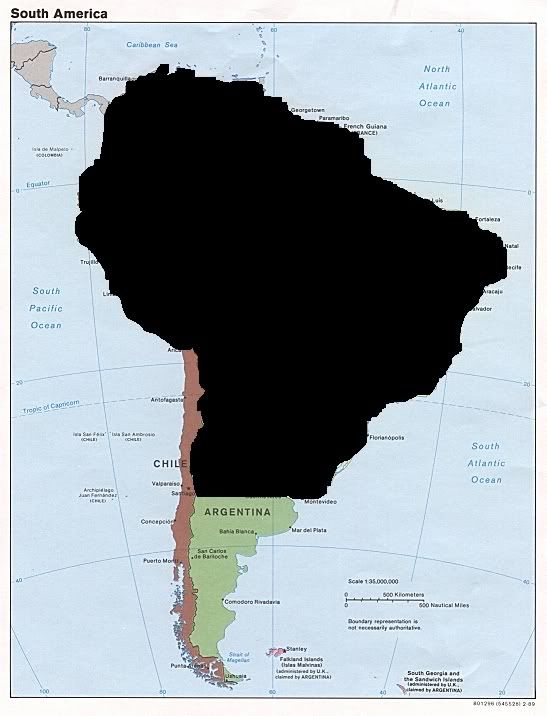- Messages
- 3,684
Distribution
Argentine Black and White tegus can be found in Brazil, Rio Grande do Sol, N. Argentina, Bolivia, La Pampa, Santa Cruz, Uruguay, Cordova, Between rivers, Missions, Santiago of the Matting, Santa Fe, San Luis, Tucuman and Paraguay. Some of the common names for this tegu are Argentine Black & White Tegu; the local name is Largato overo or overo iguana, teiu, teju or tegu the same for the Colombian tegus, or the Extreme Giant tegus. The Extreme Giant tegus are a different local then the normal Argentine black and whites; the Extreme Giant are the largest of all the tegus. They said to be found around Grand Chaco area, or what is referred to as the Chaco plains.
Argentine Red tegus can be found in W. Argentina, Chaco, Cordoba, San Luis, La Pampa, Paraguay, Brazil (Parana), Bolivia (Beni, Santa Cruz, Tarija) La Rioja, San Juan, and Mendoza. Some of the common names for this tegu are Argentine Red Tegu, Red Tegu, Teju, Paraguay Red Tegu, and Roter Teju.
The Blue teguÃ?Æ?Ã?â??Ã?â??Ã?¢Ã?Æ?Ã?¢Ã?¢ââ??¬Ã?¡Ã?â??Ã?¬Ã?Æ?Ã?¢Ã?¢ââ??¬Ã?¾Ã?â??Ã?¢s origin is scientifically unknown. It is said that they can be found in Brazil, and Colombia, however there has been photos taken of them in La Pampa, as well as French Guiana. This would be an area many miles apart and would suggest a very large range.
Colombian Black and white, Black, or Gold can be found in Brazil (Amazonas, Acre, Amapa, Goias, Maranhao, Mato Grosso, Para, Rondonia, Roraima, Rio Grande do Sul, Bahia), Peru, Colombia, Venezuela, Ecuador, Trinidad, N Argentinia (Buenos Aires, La Pampa, San Luis, CÃ?Æ?Ã?â??Ã?â? ââ?¬â?¢Ã?Æ?ââ?¬Å¡Ã?â??Ã?³rdoba), Uruguay, Bolivia (Beni, Cochabamba, Pando, Santa Cruz), Guyana, Surinam, and French Guiana. Some of the common names for this tegu are Colombian Black Tegu, Colombian Black & White Tegu, Common Tegu, Black Banded Tegu, Golden Tegu, and Gold tegu.
Argentine Black and White tegus can be found in Brazil, Rio Grande do Sol, N. Argentina, Bolivia, La Pampa, Santa Cruz, Uruguay, Cordova, Between rivers, Missions, Santiago of the Matting, Santa Fe, San Luis, Tucuman and Paraguay. Some of the common names for this tegu are Argentine Black & White Tegu; the local name is Largato overo or overo iguana, teiu, teju or tegu the same for the Colombian tegus, or the Extreme Giant tegus. The Extreme Giant tegus are a different local then the normal Argentine black and whites; the Extreme Giant are the largest of all the tegus. They said to be found around Grand Chaco area, or what is referred to as the Chaco plains.
Argentine Red tegus can be found in W. Argentina, Chaco, Cordoba, San Luis, La Pampa, Paraguay, Brazil (Parana), Bolivia (Beni, Santa Cruz, Tarija) La Rioja, San Juan, and Mendoza. Some of the common names for this tegu are Argentine Red Tegu, Red Tegu, Teju, Paraguay Red Tegu, and Roter Teju.
The Blue teguÃ?Æ?Ã?â??Ã?â??Ã?¢Ã?Æ?Ã?¢Ã?¢ââ??¬Ã?¡Ã?â??Ã?¬Ã?Æ?Ã?¢Ã?¢ââ??¬Ã?¾Ã?â??Ã?¢s origin is scientifically unknown. It is said that they can be found in Brazil, and Colombia, however there has been photos taken of them in La Pampa, as well as French Guiana. This would be an area many miles apart and would suggest a very large range.
Colombian Black and white, Black, or Gold can be found in Brazil (Amazonas, Acre, Amapa, Goias, Maranhao, Mato Grosso, Para, Rondonia, Roraima, Rio Grande do Sul, Bahia), Peru, Colombia, Venezuela, Ecuador, Trinidad, N Argentinia (Buenos Aires, La Pampa, San Luis, CÃ?Æ?Ã?â??Ã?â? ââ?¬â?¢Ã?Æ?ââ?¬Å¡Ã?â??Ã?³rdoba), Uruguay, Bolivia (Beni, Cochabamba, Pando, Santa Cruz), Guyana, Surinam, and French Guiana. Some of the common names for this tegu are Colombian Black Tegu, Colombian Black & White Tegu, Common Tegu, Black Banded Tegu, Golden Tegu, and Gold tegu.



